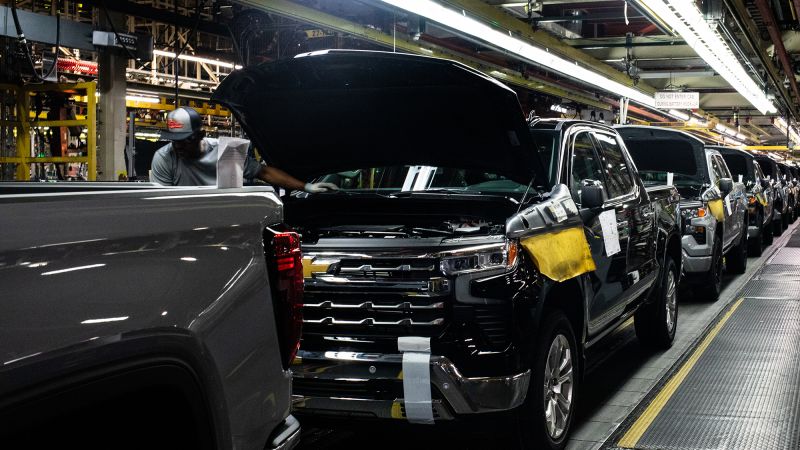The automotive industry is currently facing significant changes due to newly implemented tariffs on auto parts. While the average consumer may not give much thought to the origins of their vehicle’s components, automakers are acutely aware of these details and the implications they carry. As of Saturday, there has been a major shift, introducing a 25% import tax on most auto parts, a move that has the potential to disrupt the industry more than previous tariffs on imported vehicles.
Historically, tariffs affecting the automotive sector primarily targeted finished vehicles, leaving US-made cars largely unaffected. However, this recent policy change is poised to impact all cars manufactured within the United States. In fact, data shows that none of the approximately 10 million vehicles produced by US plants in the last year was assembled without relying on imported components. The newly established tariffs could lead to additional costs amounting to tens of billions of dollars for the automotive industry, a financial burden that will likely be passed down to American consumers in the form of higher prices.
According to Jonathan Smoke, the chief economist at Cox Automotive, the tariffs on parts have more severe implications for the broader economy than previous levies on imported vehicles. The government estimates indicate that over 50% of the materials used in cars assembled in American plants are imported; however, not all of these imports will face the same tariff rates. For instance, components sourced from Canadian and Mexican suppliers who adhere to specific wage standards are considered compliant under the United States-Mexico-Canada Agreement (USMCA) and will be exempt from tariffs.
To mitigate the impact of these tariffs, the current administration has announced that US automakers will receive some financial relief. They will be able to recover up to 3.75% of the vehicle’s price against their parts tariffs in the first year, which will gradually decline in subsequent years. Even with this refund, estimates suggest that car prices could rise by an average of $4,000, given the overall cost implications of the tariffs.
While automakers like General Motors and Ford are currently indicating that they don’t anticipate immediate price increases for their vehicles, the long-term effects on car owners and consumers could be profound. General Motors’ CEO, Mary Barra, stated that her company expects to incur costs between $4 billion and $5 billion due to the tariffs. This financial strain will likely lead to increased repair and maintenance costs, directly affecting everyday consumers regardless of whether they are purchasing new vehicles.
The tariff rules state that any vehicle built in the United States with 85% compliant parts would be exempt from tariffs. However, attaining this threshold proves to be a significant challenge, as very few vehicles meet the stringent criteria established. The automotive industry has historically treated the North American market as a singular entity, facilitating the flow of parts across borders with minimal barriers. Consequently, distinguishing the true domestic content of vehicles becomes a complex issue, delving into intricate details such as the origin of fluids and materials like oil and antifreeze.
In terms of the volume of imported parts, Canada remains a significant supplier, with $19.2 billion in components. In contrast, Mexico is responsible for sending a staggering $82.5 billion’s worth of parts to the US, although many of these do not qualify as USMCA compliant and will thus be subject to tariffs. If last year’s tariffs had been in full effect, the estimated financial burden on the automotive industry could have reached around $60 billion. Even factoring in the announced refund rules, that figure would likely drop to $40 billion.
Ultimately, the newly instituted parts tariffs illustrate a significant pivot in the automotive industry’s operating landscape. The temporary financial relief offered to automakers might be helpful, but analysts like Jonathan Smoke caution that it merely alleviates a dire situation rather than rectifying it. The costs associated with these tariffs signal a challenging transition for both the industry itself and consumers that will reverberate through various facets of the economy.



